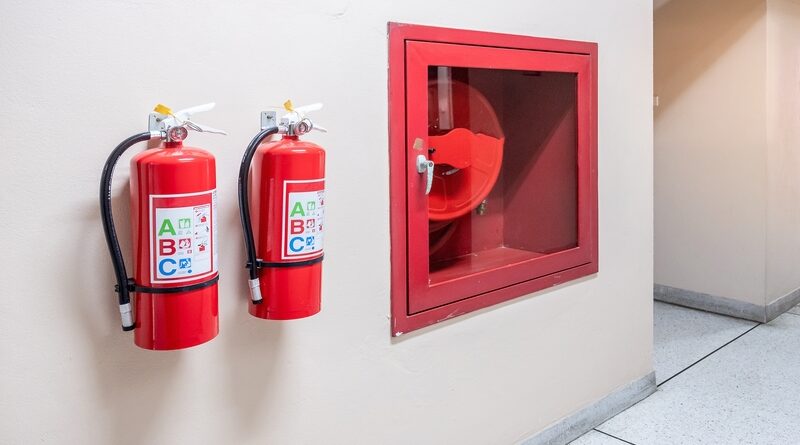What does an effective workplace occupational safety look like?
Everyone deserves to work in a safe environment. Whether this is on a construction site, office, retail shop, or someplace else. A safe working environment is the result of the planning and implementation of occupational health and safety guidelines and procedures. Each workplace will have a different plan according to the hazards present. One thing is certain, by having these guidelines, businesses operate smoothly and efficiently. When implemented, occupational safety reduces the number of days workers are away recovering. The Bureau of Labor Statistics stated that work-related injuries and illnesses resulted in 2.8 cases per 100 full-time workers in 2018. This equated to an average of eight days away from work for each case.
With these figures in mind, here are some essential occupational health and safety components to include in the day to day running of your business.
Security and access control
Every workplace has some level of security and access control. Whether this is in the form of CCTV cameras, alarms systems, or something else. Installing CCTV cameras in visible locations can prevent theft from workers and criminals. But, installing an access control system prevents much of the unauthorized entries. It also acts as an extra barrier against theft whilst at the same time ensuring only workers can enter. How? Through issuing access to workers through the use of a fob card or PIN. This safety method can only work if the entry doors remain closed when not in use. Access can be limited to the whole building and areas that are hazardous or contain valuable equipment, machinery, and stock.
Fire risk assessments
This is an essential component of occupational safety. It involves completing fire risk assessments within the workplace on a regular basis. But what does this look like? It comprises of a detailed evacuation plan and has information on:
- Evacuation meeting points;
- Floor plan with nearest exits marked;
- Names of all fire wardens;
- well-lit emergency exit signs;
- Use of fire-rated doors under standards in your jurisdiction; and
- All necessary emergency contact numbers. Including 911, poison control hotline, the nearest hospital (including address), water company, and electricity company.
Staff needs to undergo regular emergency drills to know how to respond in an emergency.
The next step in the fire risk assessment is to take note of all potential fire hazards. There should be preventative measures in place if an emergency occurs.
Example include:
- Installing an isolator or switch that can cut off the power supply in an emergency;
- Having the appropriate fire extinguishers inaccessible locations, close to the potential hazard;
- Installing commercial grade fire sprinkler systems throughout the building;
- Keeping a stocked first aid kit in a visible and accessible location;
Staff mental health and wellbeing
The good mental health of workers is essential to the running of all businesses. It boosts productivity and morale and decreases staff turnover. So promoting a healthy work environment and a positive mental health culture is vital. Here, your HR needs to know how to recognize the signs in staff who need mental health support. Additionally, they need to be equipped with the right tools for dealing with mental health issues. Whether this is access to an employee assistance program or other valuable resources. It is also important that your staff has access to these same tools should they need it at any time. By promoting good mental health amongst your workforce, staff can address this sooner.
Hygiene and cleanliness
Hygiene and cleanliness now play a bigger role than ever before in the workplace. Maintaining cleaning routines reduces the spread of germs and bacteria between surfaces and workers. This in turn reduces the risk of germs and illnesses spreading between workers. Workspaces, including floors, furniture, equipment, and other high touch point areas need to be cleaned regularly. The use of appropriate antibacterial products is necessary to maintain hygiene.
Replacing high touch point areas to hands-free alternatives also minimizes the spread of germs. Items such as door handles and taps cannot be cleaned and sanitized on a much more frequent basis. So, installing automated door openers, push plates and other hands-free door openers is a must.
Maintaining good hygiene practices is a must. Have hand sanitizer available in high traffic areas and a good supply of hand liquid soap. Consider mounting signs demonstrating what good hygiene looks like. This includes proper handwashing techniques, signs of illness, and other important hygiene habits.
Manual handling and machinery safety
Jobs that involve heavy lifting and operating machinery need to follow safety procedures every time. Training on how to use these machines and best practices for heavy lifting should be a part of every role. But, workers often forget these procedures and begin to create their own unsafe operating methods to save time. So incorporating refresher training, highlights the importance of doing it correctly the first time and every time. Additionally, displaying signs in these areas also prompt and remind workers of safe work practices. Safe work practices extend to wearing the correct protective clothing. Helmets, safety glasses, gloves, and other protective items should be available.
Safety protocols are not limited to the use of the equipment but also to the maintenance and upkeep of this equipment. This includes:
- How to check and report urgent repair work;
- Understanding and use of the Lock-Out/Tag-out (LOTO) procedure;
- Proper storage of the equipment
The successful implementation of occupational safety leads to a productive working environment. Businesses are more likely to prosper and less time is with workers away recovering from injuries or illnesses. By fostering a safety culture, workers are less likely to forget safety procedures and so less likely to be injured.











